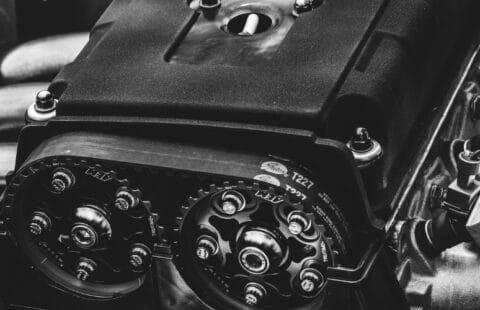
Gearbox Glossary: Essential Terms for Gear Repair and Gearbox Rebuild
Navigating the world of gear repair and gearbox rebuilds involves understanding key terminology. Whether you’re maintaining industrial equipment or planning upgrades, this glossary of essential terms will guide you through the process.
AGMA – American Gear Manufacturers Association
AGMA sets standards for gear design and manufacturing, ensuring quality and reliability in gear products.
Alignment
Alignment ensures that shafts carrying gears are accurately positioned, preventing premature wear and operational issues.
Backlash
Backlash is the clearance between mating gear teeth, affecting the smoothness and precision of gear operation.
Base Circle
The base circle is the theoretical circle from which the involute tooth profile of a gear is derived.
Diametral Pitch (DP)
DP measures gear tooth size based on the number of teeth per inch of pitch diameter. It helps determine the size and spacing of gear teeth.
Face Width
Face width is the axial dimension of gear teeth. It’s crucial for distributing loads and ensuring efficient power transmission.
Filleted Root
The filleted root is the curved transition at the base of gear teeth. It’s designed to distribute stress and prevent fatigue failures.
Gear Ratio
Gear ratio is the ratio of rotational speeds between driving and driven gears, crucial for determining the speed and torque relationship.
Hardness (BHN)
Brinell Hardness Number (BHN) measures the hardness of gear materials, impacting durability and wear resistance.
Helix Angle
The helix angle is the angle at which helical gear teeth are cut relative to the gear axis. It affects gear strength and load capacity.
Hobbing
Hobbing is the process of cutting gear teeth using a special milling machine (hobber). It’s essential for precise gear manufacturing.
Internal Gear
An internal gear has teeth cut inside the cylinder. It meshes with an external gear (pinion) and is used in various gear arrangements.
Module (MOD)
Module (MOD) is a metric measurement defining gear pitch. It determines the size and spacing of gear teeth in metric systems.
Pitch Diameter
Pitch diameter is the diameter of the theoretical pitch circle where gears mesh. It’s crucial for gear tooth engagement.
Pressure Angle
Pressure angle is the angle at which gear teeth contact. It influences gear strength, noise levels, and efficiency.
Root Diameter
Root diameter is the diameter at the bottom of gear tooth spaces. It’s important for gear tooth strength and engagement.
Tooth Profile
Tooth profile refers to the shape of gear teeth designed for efficient power transmission and smooth operation.
Tooth Thickness
Tooth thickness is the width of gear teeth measured along the pitch circle. It ensures proper meshing and load distribution.
Worm Gear
A worm gear is used for high reduction ratios. It consists of a threaded shaft (worm) and a toothed wheel (worm gear) for precise motion control.
Backlash Variation
Backlash variation is the difference in clearance between gear teeth over a full rotation. It affects gear smoothness and operational precision.
Understanding these terms empowers you to communicate effectively with gear repair and gearbox rebuild professionals like MayDay. Whether you’re discussing maintenance needs or planning upgrades, familiarity with these terms ensures your equipment operates efficiently and reliably.
Partnering with experienced professionals who understand these terms ensures your gear systems perform optimally, minimizing downtime and maximizing productivity.


